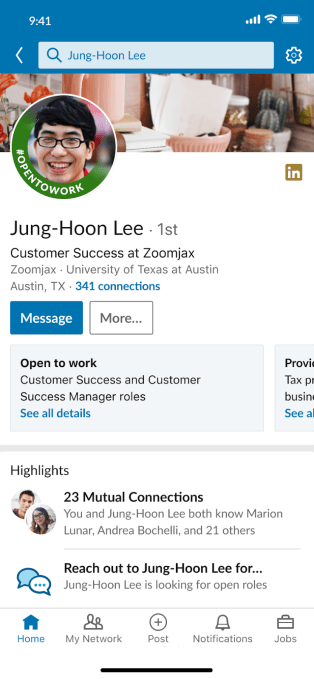
The COVID-19 pandemic has had an almost immeasurable negative impact on the wider economy. Specifically in the job market, there have been millions of job losses, and in the U.S. alone unemployment numbers like these have not been seen since the Great Depression. Now, tech companies are slowly stepping up to try to address the crisis, and the latest development on that front comes from Microsoft.
The company today announced a wide-ranging, global portal for free skills training for people who are out of work. Alongside that, Microsoft said it plans to disperse $20 million in grants to nonprofit organizations that are working to help those who have lost jobs due to COVID-19 and subsequent shifts in the economy, and with a specific emphasis on those that are working with groups that are underrepresented in the tech world.
The move comes as we are seeing other tech companies try to make their own efforts to leverage their platforms to provide their own versions of relief efforts connected to COVID-19. Google has built special portals to keep people informed on local, national and global progress of COVID-19 and related news. Facebook has built an information portal and has also created an avenue for people to offer volunteering help to those in need specifically in their community.
The money that Microsoft will be granting to nonprofits is aimed at a wide swathe of organizations, not just those focused on helping groups learn new skills, but just those helping specific groups. Those that Microsoft already works with include Trust for the Americas, Fondazione Mundo Digitale in Italy, the Nasscom Foundation in India, Tech4Dev across Africa, NPower in Canada, the National Urban League aimed at long-term unemployed and African Americans, and Skillful.
The education and training news, meanwhile, is interesting not only because of the push that Microsoft is trying to make by leveraging the assets that it already has, but that it’s doing so in tandem with LinkedIn, the social network and professional education platform it acquired for $26.2 billion in 2016. Even though they are the same company, it’s often the case that you see less collaboration between the two than you might think would exist, but this seems to be a shift from that position.
Microsoft notes that using data from LinkedIn, it identified 10 specific tech jobs that are in particular demand right now and will continue to be in demand, offer a livable wage and require skills that can be learned online if you don’t already have them. They are software developer, sales rep, project manager, IT admin, customer services rep, digital marketer, IT support, data analyst, financial analyst and graphic designer.
LinkedIn has designed “Learning Paths” that it offers through its online education portal for these jobs, and these will now be available to everyone free to use, globally, until the end of March 2021, in English, French, Spanish and German, with content getting updated in the tracks as needed. Alongside these, Microsoft Learn is offering supplemental technical content to these Paths, and Microsoft is also making GitHub’s Learning Lab free to practice if you’re learning software developer skills.
Alongside these, Microsoft is also giving a push to so-called “soft skills” that complement hunting for a job at the moment, including tips on looking for a job right now, learning “critical” soft skills, more on the concept and meaning of digital transformation, and a learning track focused on diversity, inclusion and allyship.
You can look at a list of all the content available and ultimately relevant jobs on LinkedIn’s purpose-built portal.

Image Credits: LinkedIn
In addition to the online learning efforts, LinkedIn is also launching a separate track for those who want to either leverage LinkedIn to get spotted more easily for job opportunities, and for those who want to volunteer to help others, to offer advice and mentorship for those looking for work, or get more training to get through interviews. For those who want to signal their job seeking, they can now add an “OpenToWork” frame on their profile pictures, which links to a separate banner that runs under your profile picture that lets people see what kinds of jobs you would like to consider.
The offer to help is not unlike LinkedIn’s efforts at cultivating a mentorship program: The idea is that there are people who have the time and desire to use their skills to help others than just themselves and the companies they work for. As with the mentoring, those interested can indicate what they would like to do — making introductions, resume help or just providing advice.
LinkedIn’s interview preparations, meanwhile, are another step into working closer with Microsoft: LinkedIn’s built a set of tools that uses Microsoft’s AI platform for feedback throughout the training.

